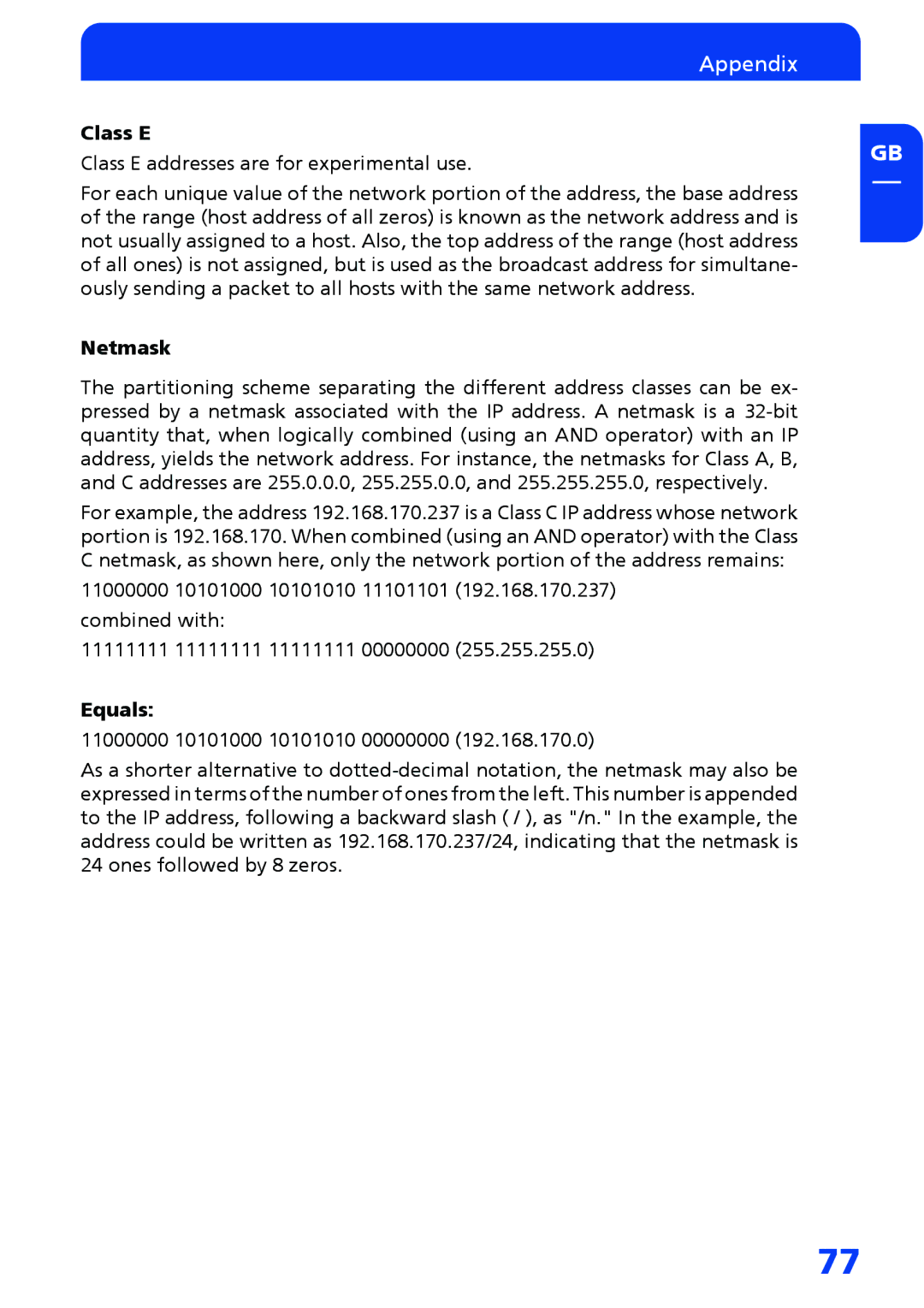
| Appendix | |
Class E | GB | |
Class E addresses are for experimental use. | ||
|
For each unique value of the network portion of the address, the base address of the range (host address of all zeros) is known as the network address and is not usually assigned to a host. Also, the top address of the range (host address of all ones) is not assigned, but is used as the broadcast address for simultane- ously sending a packet to all hosts with the same network address.
Netmask
The partitioning scheme separating the different address classes can be ex- pressed by a netmask associated with the IP address. A netmask is a
For example, the address 192.168.170.237 is a Class C IP address whose network portion is 192.168.170. When combined (using an AND operator) with the Class C netmask, as shown here, only the network portion of the address remains:
11000000 10101000 10101010 11101101 (192.168.170.237) combined with:
11111111 11111111 11111111 00000000 (255.255.255.0)
Equals:
11000000 10101000 10101010 00000000 (192.168.170.0)
As a shorter alternative to
77
